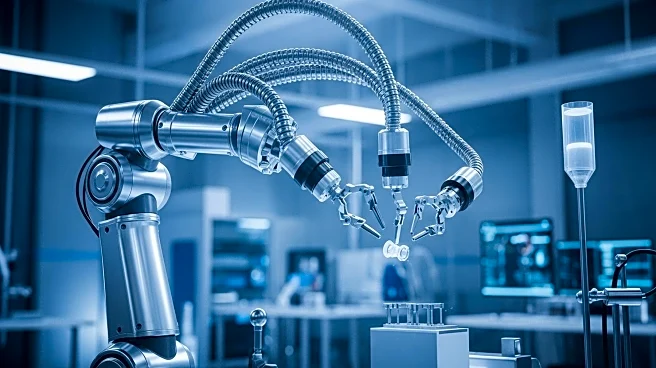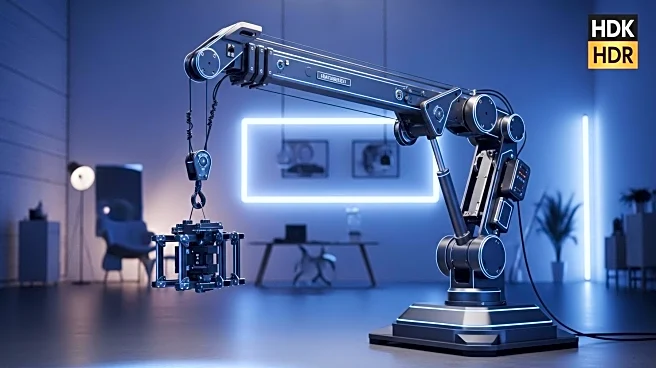What's Happening?
Researchers at ETH Zurich's Soft Robotics Lab have developed a biohybrid system that replicates the interface between bones and muscles, enhancing force transmission. This system combines synthetic and biological materials to mimic the structure and function of biological tissue, with potential applications in robotics and medical implants. The interdisciplinary team created a functional model using living biological tissue and synthetic materials, aiming to improve human-machine interaction and advance biohybrid implants.
Why It's Important?
The biohybrid system developed by ETH Zurich represents a breakthrough in the integration of biological and synthetic materials, offering new possibilities for robotics and medical applications. By mimicking the natural musculoskeletal system, this technology could lead to advancements in adaptive prosthetics and biologically integrated robotic systems. The ability to replicate the muscle-bone interface could improve the design of medical implants, enhancing their functionality and integration with human tissue.
What's Next?
The research team plans to further explore the integration of real muscles and tendons into functional units, advancing the development of musculoskeletal robots. Future applications may include biomechanical modeling of the middle ear and lab-grown replacement tissues. The study lays the foundation for biohybrid systems that bridge biology and robotics, with potential impacts on regenerative medicine and bioinspired technology.
Beyond the Headlines
This research highlights the potential of engineered biological tissue to reproduce the mechanics of natural musculoskeletal systems, advancing both fundamental research and practical applications. The study exemplifies how interdisciplinary collaboration can tackle complex challenges, paving the way for innovative solutions in soft robotics and regenerative medicine.










